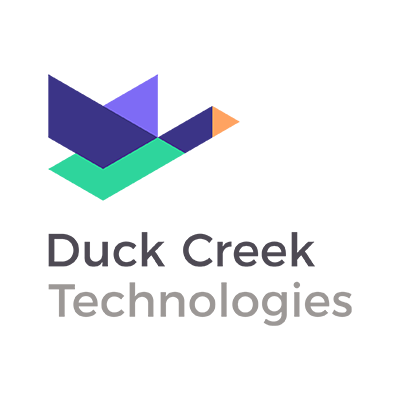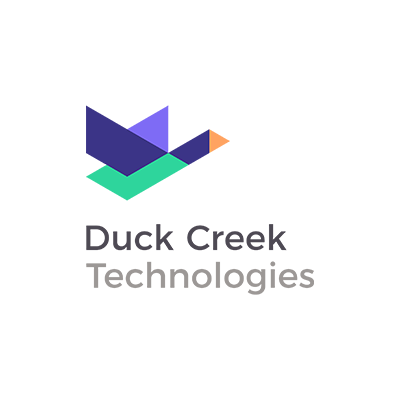
Once leading edge, insurance telematics, analytics, and big data have pushed themselves into the mainstream. Now a slew of emerging technologies is close behind. For claims organizations that value technology and the competitive edge it can offer them, the ultimate question is how best to use today’s technology — to lower expenses, improve efficiency, and support customer service, etc. — all while preparing for a rapidly developing but uncertain future.
Not surprisingly, the conclusions they reach, and the technology decisions they make, are different given each of their individual circumstances. Their attitudes toward technology and their ability to use it effectively are based on any number of a variety of factors, including the real or perceived success of previous and perhaps even unrelated projects, what they currently own, and their access to talent.
Believe it or not, I’ve seen carriers with legacy systems who are using advanced predictive analytics for subrogation, fraud, and assignment, and I’ve seen carriers with modern systems that are still moving paper around the office.
Claims: Modernization, Adoption, and Innovation
Those are exceptional examples but, broadly speaking, the carriers I talk with typically focus on three areas:
- Modernization. They are seeking a modern claims system that provides the speed and agility they need to meet their business needs today, and that offers the flexibility they need as the business, technology, and customer expectations change.
- Adoption. They’re using the claims system and adopting software and services to assist claims processes as they know them today. They also may be looking for tools that offer “next step” opportunities to accelerate resolutions.
- Innovation. They’re fully exploiting the technology, techniques, and talent that are available today, always fine tuning and looking at what’s possible while keeping an eye on emerging threats and opportunities.
I’ll just take a moment to reiterate that these are generalizations, that they are non-sequential and not exclusive. If you’re responsible for technology decisions, though, you know that the first and perhaps most important step — even before deciding where you want to go — is accurately determining where you are. Only then can you make informed decisions about how to get there.
Claims and the Modernization Mindset
When a carrier is looking to modernize a claims system, it’s typically because their current system is not compatible with “digitalization” and therefore limits the speed, agility, and integrations they need to be successful. The idea is to invest in a foundation to run the business today, that enables them to react to changes in the business and customer expectations and provides a framework to adopt new technologies and techniques as they come along.
Digitalization is now foundational to streamlining and automating routine activities, increasing transparency internally and externally, reducing claims cycle times, and offering satisfying customer experiences. It facilitates communications and expands opportunities to leverage data for reporting, analytics, and more.
An important and immediate goal is to offer a “single view,” in which authorized users can see all of the actions, notes, and history on a claim, customer, or related party. This level of transparency opens the opportunity to process a claim simultaneously across multiple teams – recovery, special investigation unit, APD/BI for example – and is critical to accelerating claims resolution. Of course, the flexibility to restrict certain elements, like SIU notes, also is a requirement.
Because customers’ expectations for speedy resolutions are increasing, disjointed systems and processes must be corrected to meet their elevated expectations. For example, claims handlers shouldn’t be hopping back and forth between systems to process the claim. I talk to carriers even today who offer first notice of loss apps — but behind the scenes, someone else literally is rekeying data into a claim system. More sophisticated forms of customer self-service unsurprisingly will require more, and seamless, interactions between systems and services.
There are lots of opportunities today for automation, including confirming coverage, automatic reserving, checks for authority, and limits and deductibles, and creating alerts. Claims segmentation — identifying the claim type and complexity so you can align it with the right adjuster – and workload optimization also offer opportunities for real gains in productivity.
Claims and the Adoption Mindset
The adoption mindset assumes that the foundational technology is solid and capable, and is all about taking advantage of new software and services, such as artificial intelligence, photo adjusting, data enrichment and pre-fill, and the Internet of Things.
Artificial intelligence, such as IBM’s Watson, Google’s new voice-activated analytics, Amazon’s AI services, and even Apple’s Siri, offer interesting examples of where consumers are headed, and what capabilities they soon will expect from insurers.
AI can handle massive amounts of data in a short amount of time, recognize patterns, and doesn’t have to replace human decision making to be valuable. As AI applications become more mainstream, lower-cost analytics and machine-learning tools are already available to reduce the number of touches per claim, make better-informed decisions, automatically process portions of a claim, or suggest a “next-best action” based on claim characteristics, or historical patterns.
Photo adjusting offers another opportunity for efficiency, and vendors are offering it as a service. Some vendors will even crowdsource the photo if the policyholder doesn’t want to take it, and they can connect with you as just another adjuster through your estimating software. It’s predominately for autos, but as drones are used more widely, photo adjusting will be used for personal and commercial building assessments.
Another marker for those in the adoption mindset is their interest and ability to use data enrichment, that is, accessing external data to inform the claims process. If this data is used strategically and in the right combinations, it can lead to better decisions, more efficient processes, and superior customer experience. Plus, these emerging modes of customer interaction give carriers access to a ton of new and potentially valuable data.
One example is with third-party claimants. If you know identifying items, like phone number, or name and address, there are services that will tell you who their carrier is and what coverages they have. For an auto claim, if you know a vehicle plate number and state, they can tell you who the third party is. Once you have their carrier and coverages, gathered during FNOL, it can speed up the recovery process and reduce the claim cycle time dramatically
Data pre-fill is taking external information bringing it into the claim process and actually populated the claim. With my example of the third party, it’s retrieving the data and automatically populating the claim with those relevant details.
Telematics initially was used primarily for underwriting, but now also is a tool to inform the claim process. The ability to objectively determine whether a vehicle was stopped, for example, or how fast it was going, or even if it parked in the garage when the accident occurred, indicating fraud, obviously could be very valuable in the claims resolution process.
Claims and the Innovation Mindset
There are several aspects of the innovation mindset that will look familiar: fully exploiting the technology that’s available today — always fine-tuning, considering what’s possible, keeping an eye on the horizon for what’s to come, and figuring out how to leverage it for claims. That said, innovation is not necessarily about owning new and cutting-edge technology. It’s more about encouraging creativity and experimentation and having the technological wherewithal to test and learn, and then implement solutions quickly.
The best examples of innovation that I have seen emerged from exploration in a low-risk environment. Essentially, you build solutions that challenge conventional thinking. Then, if a solution proves out, you try to scale up. The truth is that not every innovation is sexy, and even little things can have an outsized impact on outcomes. For example:
- Considering different workflows, and A/B testing them to reduce handle times or the number of touch points
- Eliminating processes, via photo adjusting, straight-through processing, or other tech
- Tweaking exception handling to automate more claims while kicking exceptions out for review
- Surfacing actions when there has been a lack of activity, rather than when they “need” to take place
- Rethinking the “most-efficient sequence” for FNOL
“Speed to market” is more than just jargon. Even for the little things mentioned above, the ability to test, learn, tweak, and implement them without creating custom code is critical. When it comes to the bigger things, speed to market may also include the willingness to take risks and pursue ideas before the market or regulators are ready. The payoff, in terms of new strategies, services, products, and markets, can be impressive.
Not long ago, drones were used for military operations, and federal regulations prohibited their commercial use. Now many carriers are using them for routine inspections. Liberty Mutual enables consumers to navigate the insurance process with voice commands through an Amazon Echo. Artificial intelligence, once a Sci-Fi bugbear, is deployed to help decision-making around personal injury claims, saving 40,000 work hours at Zurich, reducing claims processing time to as little as five seconds. Personal property insurer Lemonade promises renters and homeowners insurance in as little as 90 seconds, and payment of claims in three seconds, all with zero paperwork. GEICO has deployed Kate, a virtual assistant chatbot for routine customer interactions. Tesla vehicles are equipped for completely autonomous driving and – in some markets – bundled insurance.
The list of insurance innovations could on for pages, but as you can see: innovation is an iterative exercise, and it requires a foundation consisting of technology, creativity, management support, and a willingness to take risks. It plays a crucial role in a carrier’s ability to succeed in a highly competitive marketplace, and it’s the only way forward for those who would do more than merely survive.
Will you lead change, or will change lead you?





